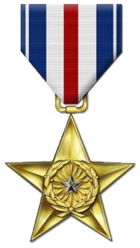South African participation in the Korean War
- Garth Calitz
- Aug 7, 2018
- 3 min read
Just a year after the South African Air Force’s (SAAF) contributed towards beating the blockade of West Berlin; the SAAF’s services were once again called upon. This time the scene of operations was Asia, where North Korean forces had invaded the Republic of South Korea on 25 June 1950.


The United Nations acceded to the request of the United States to intervene militarily on the side of South Korea. On 12 August 1950, the South African government announced its intention of placing No. 2 Squadron, the so-called “the Flying Cheetahs” of the South African Air Force at the disposal of the United Nations. The offer was accepted, and on 26 September 1950, 49 officers and 206 other ranks, all volunteers, left from Durban for Johnson Air Base in, Yokohama, Japan, prior to their deployment in Korea. All these men were seasoned pilots and technicians having an outstanding World War II record from operations in Eastern Africa, Ethiopia, Sicily, Italy and the Middle East.
2 Squadron had a long and distinguished record of service in Korea flying F-51D Mustangs and later F-86F Sabres. Their role was mainly flying ground attack and interdiction missions as one of the squadrons making up the USAF’s 18th Fighter Bomber Wing.


The first flight of four F-51D Mustangs departed for Korea on 16 November 1950 and the first operational sortie was flown three days later from K9. This was at a stage when the United Nations forces were retreating in front of the advancing enemy.

In freezing cold and poor weather, the aircraft had to continue operating and be maintained and armed in the open, moving from K-24 (Pyongyang East Air Field) to K-13 (Suwon Airbase), K-10 (Chinhae Airbase) and finally K-55 Airbase at Osan in January 1953, which became the all jet fighter base for the 18th Fighter Bomber Wing. Here the squadron immediately started to convert to the Canadian F-86F Sabre jet fighter. On 11 March 1953 the squadron flew it first operational sortie with the F-86F Sabre. The Squadron now flew, in addition to its ground attack role, high-level interdiction and standing patrols along the Yalu River.

The cease-fire was signed at Panmunjom at 11:00 hours on 27 July 1953. During the Korean conflict the squadron flew a grand total of 12,067 sorties.
According to the UN Korean War Allied Association, a total of 826 South Africans served in the Korean War. 243 were Air Force officers and 545 were Ground Personnel. 38 army officers and men served as part of the first Commonwealth Division. 37 South Africans gave their lives. 11 South Africans are interred at the UNMCK in Busan. Eight prisoners of war were returned. Aircraft losses amounted to 74 out of 97 Mustangs and four out of 22 Sabres.
On 31 October 1953, the last South African Force left Korea.
The Squadron received the United States Presidential Citation, the Korean Presidential Citation and the USAF Unit Citation. Individual medals were 2 Silver Stars, 50 Distinguished Flying Cross (DFCs), 1 cluster to the DFC, 40 Bronze Star Medals, 176 Air Medals, 152 clusters to the Air Medal and 1 Soldier Medal.
Silver Star Distinguished Flying Cross Bronze Star Air Medal Soldier Medal
Since the establishment of diplomatic relations, the Ambassador, Seoul, attends the General Meeting of the Commission of the United Nations’ Memorial Cemetery in Korea (UNMCK) in October each year. South Africa is a member of the Commission and annually contributes towards the upkeep of the graves of the war-dead. In honour of the fallen South African heroes during the Korean War, the Mission also attends the annual commemoration ceremony in the South African Air Force Memorial in Pyongtaek which was erected by the Koreans and officially belongs to the Korean Government.

South Africa’s participation in the Korean War has largely remained an unforgettable act in the minds of the Koreans, thus making South Africa a natural ally of the Korean people.

































